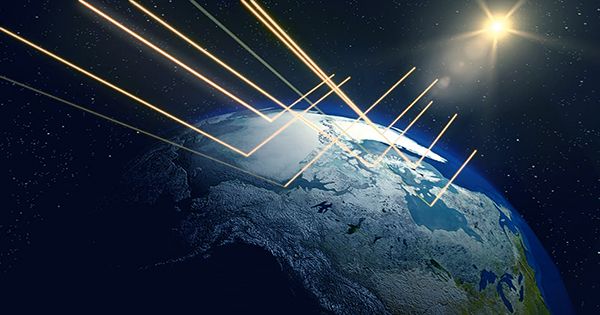A new team of international researchers has discovered a new type of space weather. At the height of our planet’s polar region, plasma orbits, looking like a typhoon or hurricane. The discovery of these space hurricanes published in Nature Communications. Hurricanes are a common feature of the solar system. As the particles rise or fall, a zone of depression can form – around which, hurricanes occur. This is how tropical storms occur in the lower atmosphere of the earth. It turns out that electrically charged particles in the ionosphere can behave in the same way.
In a new study, researchers re-analyzed data from August 2014. The new work showed the existence of rotating plasma structure over a thousand kilometers (600 miles) several hundred kilometers above the North Pole. Space hurricanes accelerate electrons toward Earth, increasing the light in the north in this region, which takes the shape of a cyclone.
This strange aurora happened on August 20, 2014, for about eight hours. The phenomenon occurred during extremely quiet geomagnetic conditions and near the magnetic north pole compared to the average northern lights. Co-author Professor Mike Lockwood, a space scientist at the University of Reading, said in a statement, “Until now it was uncertain that the space plasma hurricane was even non-existent, so it’s incredible to prove it with such interesting observations.”
“Tropical storms are associated with a lot of energy and these space hurricanes must be created by solar wind power and the abnormal and rapid transfer of charged particles to the Earth’s upper atmosphere. Plasma and magnetic fields in the planets’ atmosphere are all over the universe, so research shows that space hurricanes should be a widespread phenomenon.” Data from multiple satellites, as well as simulations, suggest that quiet periods around the Earth’s magnetic field could lead to these events.
When the lines of our planet’s magnetic field are not disturbed, they form a fancy structure just above the magnetic pole, allowing electric particles from the solar wind to enter the upper and middle atmosphere directly. This is an important insight. Our telecommunications network is affect by space weather in two ways. Events such as large solar storms can disrupt satellites. At the other end of the scale, we have a continuous flow of uninterrupted particles from the sun that slowly but surely our technology goes after it. Explorations show that we should not underestimate the space weather even during periods of calm.















